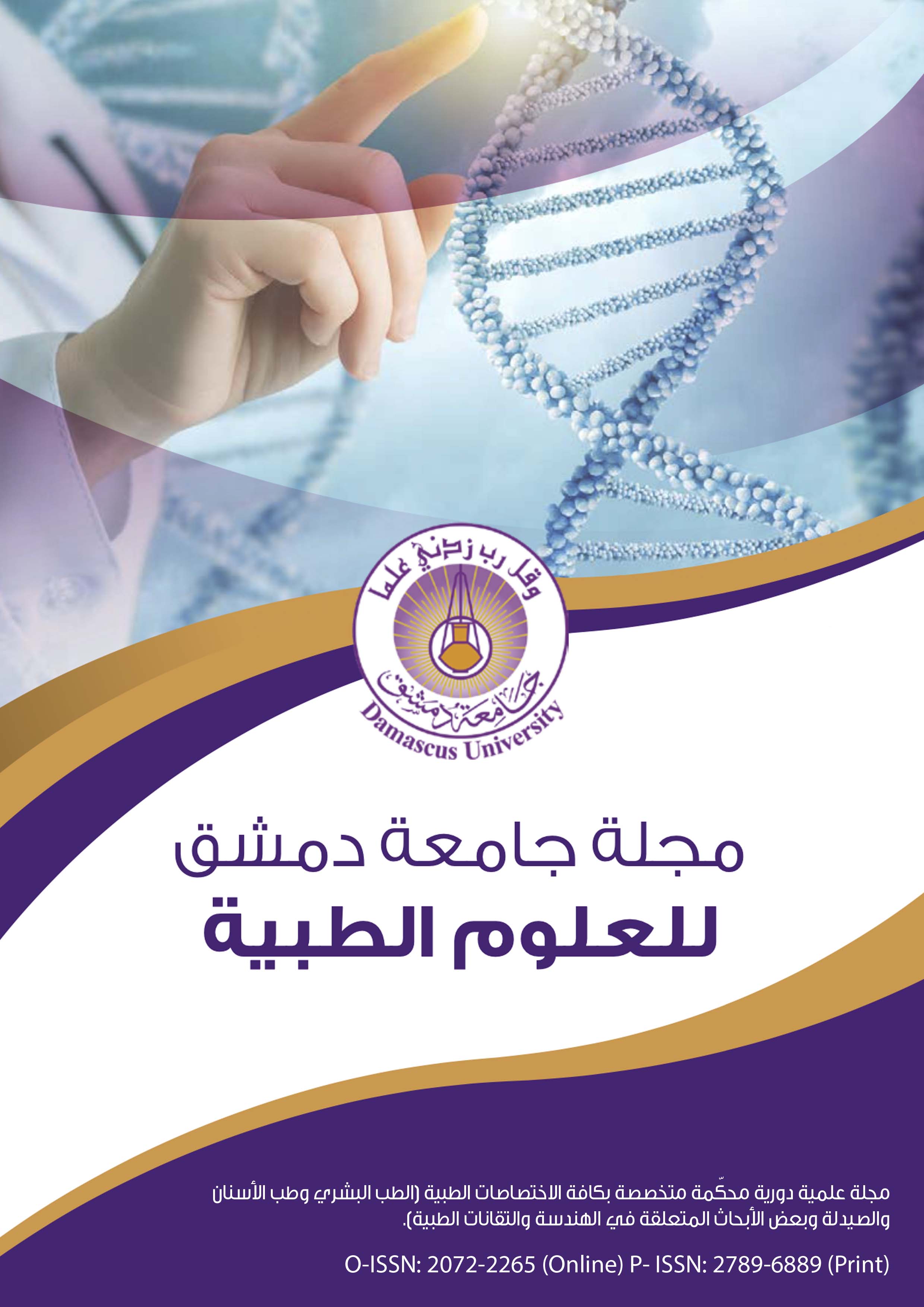دور الدعامات في تشكيل النسج اللثوية حول الزرعات السنية (دراسة سريرية)
الكلمات المفتاحية:
زرع الأسنان، الدعامات القابلة للصب، الدعامات المطبوعة باستخدام الطابعة الليزرية، الحليمات اللثوية، مظهر انبثاق السن من اللثةالملخص
الملخص:
خلفية وهدف البحث: ان الهدف الرئيسي من استخدام زراعة الأسنان هو التعويض عن الأسنان المفقودة بشكل يعيد الناحيتين التجميلية والوظيفية للمريض بما يضمن نجاح التعويض طويل الأمد ، حيث أنه غالباً يتم التعويض فوق الزرع باستخدام دعامات جاهزة مصنعة مسبقاً من قبل الشركة المنتجة للزرعات ولكن بسبب المشاكل التي تواجه طبيب الأسنان عند التعويض على الزرعات باستخدام هذه الدعامات من حدوث تراجع في الحليمات اللثوية وتغيير من ناحية الشكل ومظهر الانبثاق عن السن الطبيعي وهذا بدوره يشكك بقدرتها على دعم النسج اللثوية المحيطة بالزرعة من المناطق الملاصقة والشفوية. تم اللجوء إلى أنواع أخرى من طرق تصميم الدعامات حسب الحاجة، فهناك الدعامات القابلة للصب بالإضافة إلى الدعامات المصممة حاسوبياً والمصنوعة باستخدام الطابعة الليزرية ثلاثية الأبعاد.
ومن هنا جاءت فكرة البحث للمقارنة بين النواحي التجميلية للدعامات القابلة للصب والدعامات المصممة بواسطة الطابعة الليزرية ثلاثية الأبعاد من حيث ملئ الحليمات اللثوية للفراغات ومظهر انبثاق السن من اللثة وذلك بعد الصاق التعويض الدائم مع فترة متابعة سنة.
مواد وطرائق البحث: تألف عينة البحث من 32 زرعة سنية تتمتع بنفس المواصفات (من حيث النوع والطول والعرض) (16 زرعة تم التعويض عنها باستخدام الدعامة القابلة للصب و16 زرعة تم التعويض عنها باستخدام الدعامة المطبوعة باستخدام الطابعة الليزرية ثلاثية الأبعاد) تم لدى كل مريض إجراء غرستين متجاورتين بحيث أن كل مريض حصل على دعامة قابلة للصب ودعامة مطبوعة، تم دراسة النواحي التجميلية من حيث ملئ الحليمة للفراغ ومظهر انبثاق السن من اللثة emergence profile of natural tooth حيث تم إعطاء أرقام 0-1-2 للتقييم بحيث يكون الرقم 2 هو الأفضل و0 هو الأسوأ، هي تمثل علاقة التعويض فوق الزرع مع النسج المحيطة بالنسبة للأسنان المقابلة. وتم ذلك عن طريق الصور الفوتوغرافية وأخذ رأي المريض من الناحية الجمالية واعتمادا على جداول مخصصة لذلك وذلك بفترات مختلفة (عند الالصاق، ثلاثة أشهر، وستة أشهر، وسنة)
النتائج: بعد اجراء الدراسة الإحصائية أظهر اختبار Mann-Whitney U لتقييم درجة ملء الحليمات اللثوية الأنسية والوحشية للفراغ بين الزرعة أو السن أو الزرعة المجاورة أن النسبة المئوية لملء الحليمة الوحشية والأنسية للفراغ بالنسبة للدعامة المطبوعة كانت 100% أما بالنسبة للدعامة المصبوبة فقد بلغت 93.8% وبالنسبة لمظهر انبثاق السن من اللثة فقد أظهر اختبار Mann-Whitney U أن متوسط الرتب بالنسبة للدعامة المطبوعة 18 بينما في الدعامة المصبوبة 15 وبالتالي عند مستوى ثقة 95% كان مستوى الدلالة أكبر من 0.05 وبالتالي لم يكن هنالك فرق جوهري بين الدعامات من الناحية الإحصائية بالنسبة لتقييم الحليمات اللثوية و مظهر انبثاق السن من اللثة.
الاستنتاجات: ضمن محدوديات هذا البحث واستناداً على النتائج السابقة، وجدنا أن التعويض عن الفقد باستخدام الدعامات المصنعة باستخدام الطابعة الليزرية ثلاثية الأبعاد والدعامة القابلة للصب كلاهما أعطى نتائج تجميلية من الناحية السريرية من حيث ملئ الحليمات اللثوية للفراغ ومظهر انبثاق السن من اللثة مع وجود أفضلية بسيطة للدعامات المطبوعة.
الكلمات المفتاحية: زرع الأسنان, الدعامات القابلة للصب, الدعامات المطبوعة باستخدام الطابعة الليزرية, الحليمات اللثوية, مظهر انبثاق السن من اللثة.

